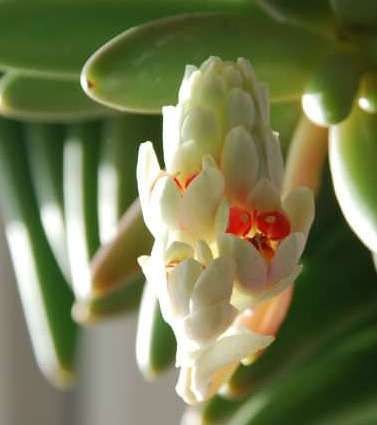Pachyphytum viride
(Pachyphytum viride)

Description
Pachyphytum viride is a species of flowering plant. This was first described by Walther. Pachyphytum viride belongs to the genus Pachyphytum, and family Crassulaceae. Pachyphytum is a small genus of succulents in the family Crassulaceae, native to Mexico, at elevations from 600 to 1,500 metres (2,000 to 4,900 ft). The name comes from the ancient Greek pachys (=thick) and phyton (=plant) because of the shape of the leaves. The species of the genus Pachyphytum are perennial succulent plants. They grow as hairless rosette plants. The usually short shoots are upright up to 70 cm young and later prostrate to longer than 1 m. The usually simple and occasionally basally branching shoots can reach a diameter of up to 3.5 cm. The rosettes have a diameter of 6 to 20 cm and are made up of 10 to 40, rarely up to 80, clearly separated leaves that are often intensely blue frosted. Towards the shoot tip, the leaves are much more crowded together. The young leaves are more or less erect, later spreading and the older ones often curled back. They are obovate to spatulate or elliptical-oblong to lanceolate and usually end blunt to pointed. The upright inflorescence emerges laterally from the leaf axils of the upper leaves. The lower 10 to 20 cm of the flower stalks are leafless, the upper 6 to 9 cm are covered with basally spurred, leaf-like bracts. The inflorescence is simple and initially overhanging. Later it is erect and bears up to 50 individual flowers. The bracts (bracts) are mostly overlapping and elliptical to obovate or lanceolate in shape. They are basally often arrow-shaped to stalk-encompassing or more or less bidentate spurred.
Taxonomic tree:







